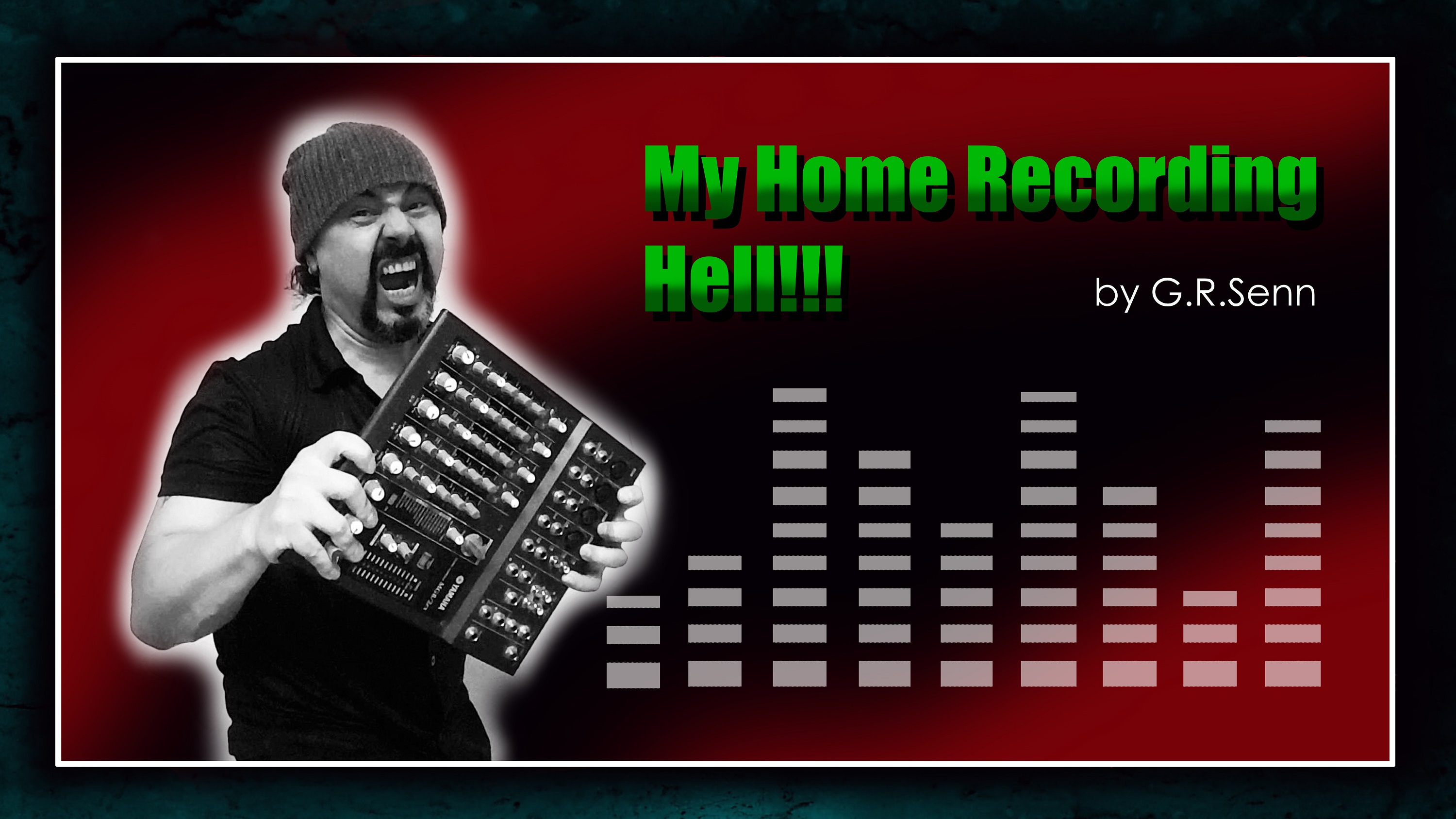
After a long, looong break I've started recording again and taking notes this time. Hey, I'm not a studio wizard or anything like that, however, more often than not, I do come up with quite useful ideas. Below, I'll be sharing those. Enjoy
My Home Recording Hell, Intro

Hi fellow musicians,
It had been a while since I did my last recording and mixing; years to be correct. One forgets a lot during that time, although some chops tend to show up when you least expect them, as well. I’ve never stayed away music completely while I was busy with other creative projects but I didn’t record anything except for short videos for Instagram and Facebook. The longer I took the scarier it got. In the beginning of 2018, finally, I decided to go for it again but sudden, unexpected and sad incidents that occurred set me back for a few months more.
After a bumpy start and some over due annoyances I’ve begun to re-discover my way around the knobs and faders. In fear of forgetting some info and having to re-invent the wheel in the near future I’ve started taking notes constantly. Then about a week ago I said to myself “hey this is simple but useful information, why not share it with others on a blog, vlog, etc.?” That’s exactly what I intend to do, share files from My Home Recording Hell.
If you already know this stuff, skip it, but if you happen to find an idea that you can benefit from, grab it.
Mix on, friends.
G
Noisy Vocal Tracks, Anyone?
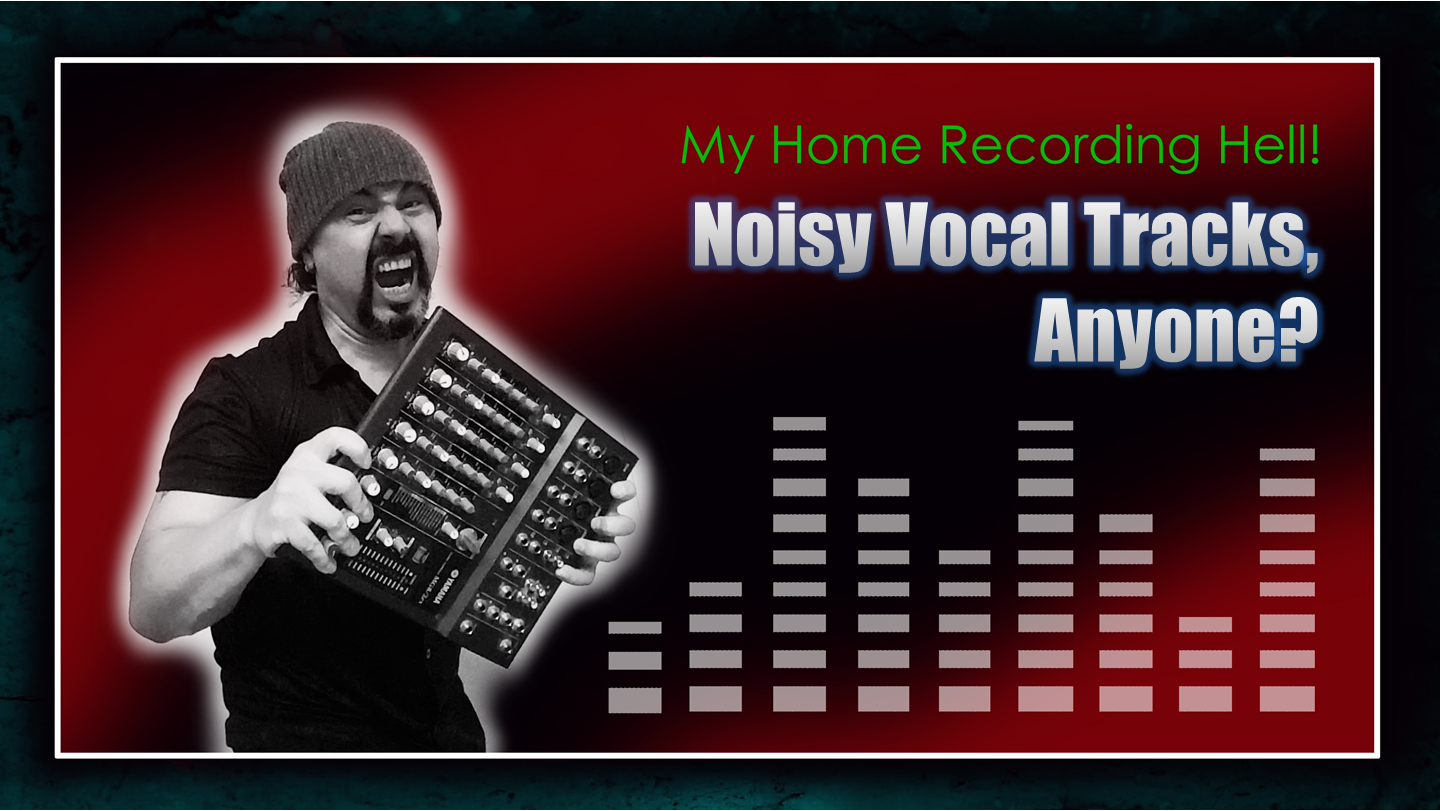
Let’s say you were a bit stingy or you simply didn’t have the budget for that pop filter. You were too lazy to build one yourself out of a hanger wire and your girlfriend’s (or your mom’s) old tights. Not only that you couldn’t bother with the proper mic positioning, technique and proximity adjustments…orrr just like in my case, you were only recording a throw away guide vocal track without giving a crap but somehow you ended up capturing a good vibe and now you’re stuck with a track that has a great performance and all the pops, hiss, chair cracks, computer monitor humming and whatnot.
Before you dive into your go-to toolbox, meaning your “Plugins Folder”, and you pull out an amazing EQ or De-Esser that your brother landed you (come again?), hold on a second. Sure, all that may help you to a point but nothing beats an old-fashioned tailoring act on each one of those tracks.
Only your mouse and your index finger are required. Yes, it is boring and may take forever but the results will be more natural, organic in a way, than any plugin may give you. Sure, you may not fix everything this way especially if your “t”s and “s”s are nothing more than a chunk of distortion that takes away the consonants all together when you crop it but that’s when you can either perform the bit all over again or use a magical plugin of your choice.
If you’re new to editing signals it may be a bit frustrating in the beginning when you can’t get the exact sounds you were hoping at every click but don’t quit because the more you keep at it the more familiar you will get with the signal waves, what they mean, where to chop, where to increase or decrease the volume and what shapes to use to be able to do that.
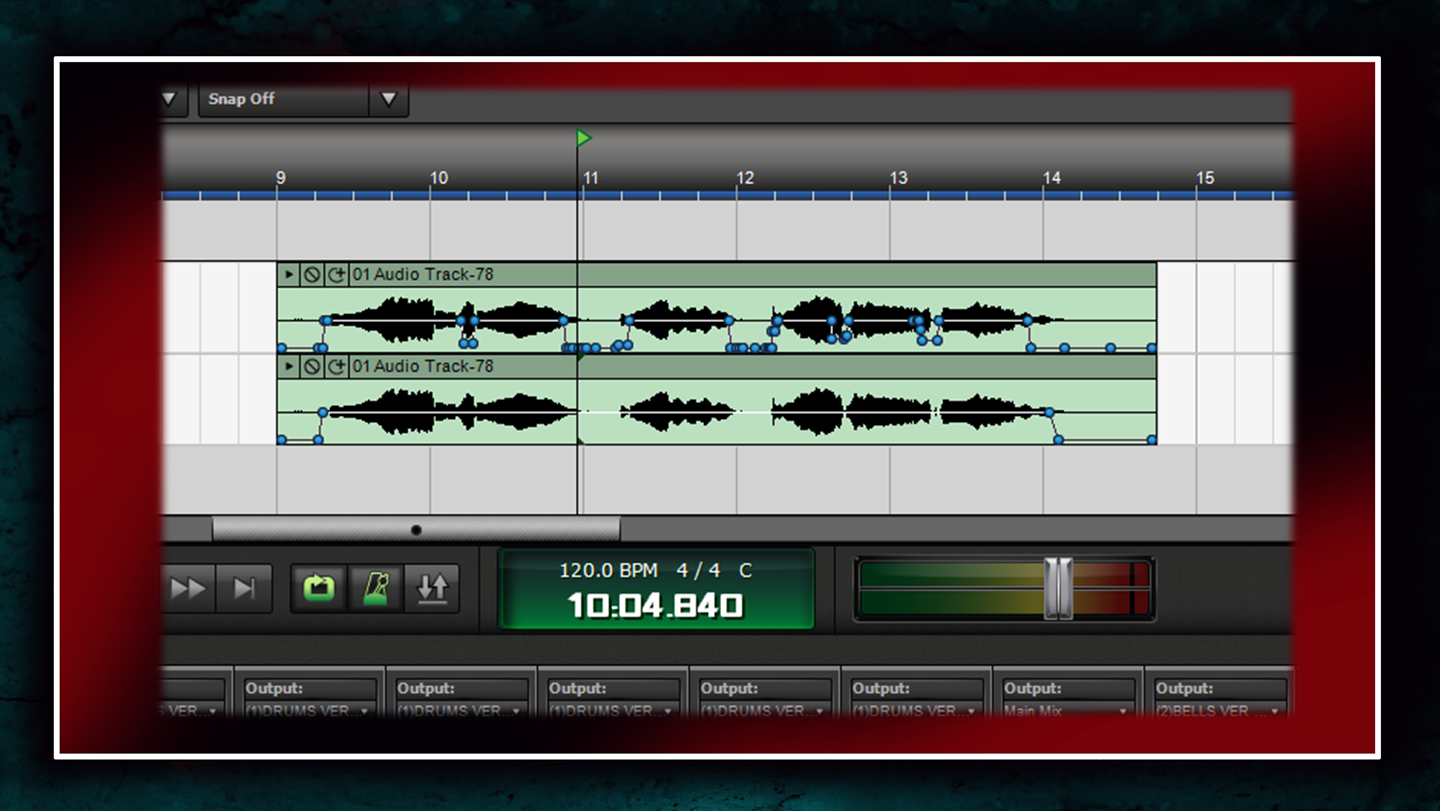
Here’s an example of how I fix the vocal track noises in my Digital Audio Work Station.
What was very surprising to me was realizing how easy it was to fix some hopeless sounding noises. I mean I was sure that I would have to go and sing all the parts again but with a few moves I ended up with tracks that were clean as a whistle.
One tip, try not to cut off any teeth and tongue noises, rather, spot them, mark them and reduce the volume drastically at first and increase it bit by bit and test it until you’re pleased with the overall sound. Test it at different volumes. When your monitors are quiet “s”s may seem under control but when you bring the level up, they may show up again. If there are several backing tracks using the same words, they all must be cleaned up and tested together.
A good idea would be choosing a track or two whereby it is okay for those trouble consonants to be present and then getting all the other backing tracks rid of those consonants or any consonant for that matter, if you’ve got the time and patience for it.
After all that bring in all the instrument tracks and see how the vocal tracks hold up against them. The chances are you’re going to have to do more adjustments to make them sit in well within the overall sound. But hey, that’s what mixing is all about, right? Constant trial and error.
Mix on, my friends.
G
Copy the Hell Out of Everything!
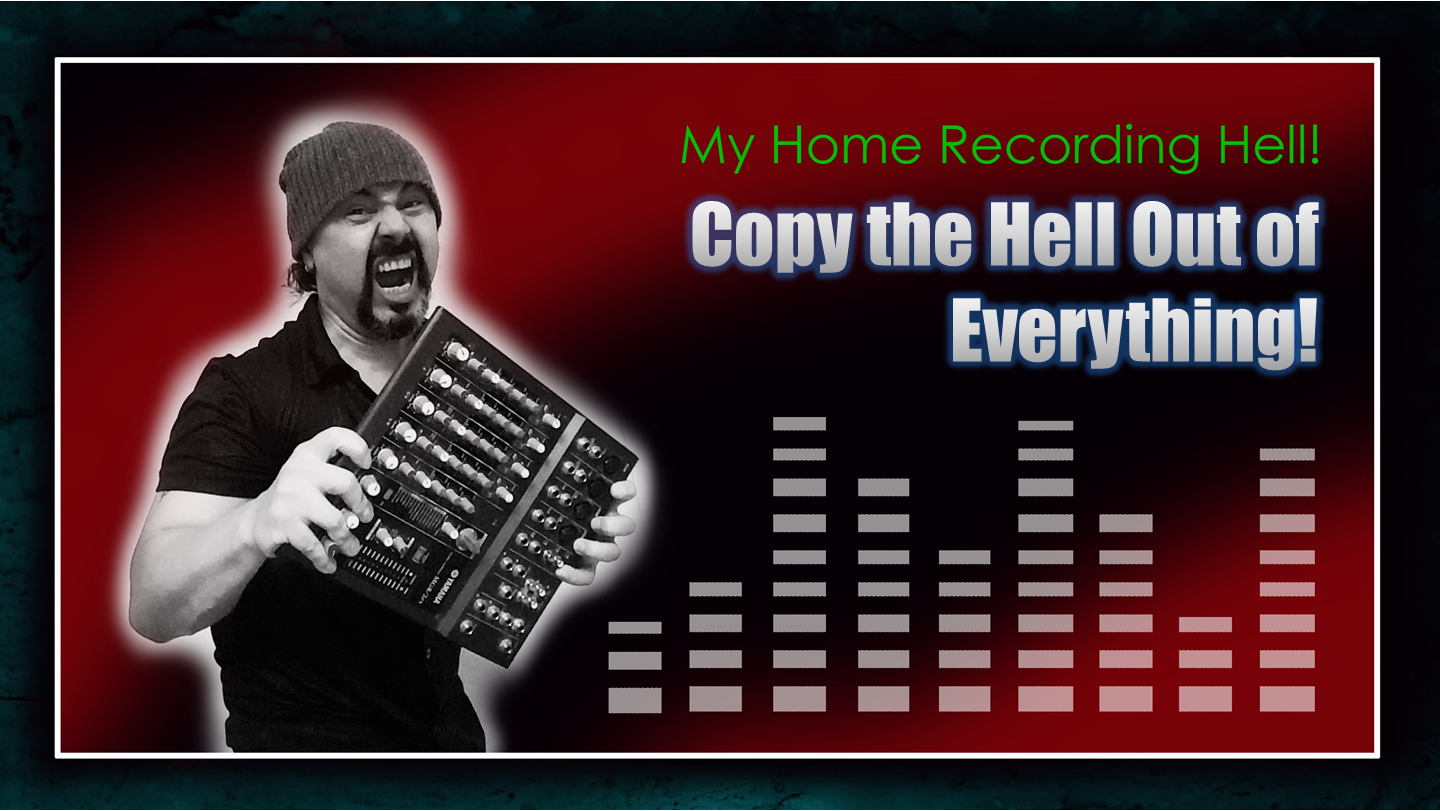
Make it a habit to create a copy of the file that you’re working on, even if it’s just a small wave file you’re trimming; actually, especially then. Because it’s like going down a rabbit hole. You start by thinking “I’m just going to roll off the hiss in the beginning and chop off a tiny, tiny transient in the end, why bother with a copy now?” right?
Before you know it, you’ve changed the file completely. Your ears are tired and your mind has begun to wander off a lot after the concentration torture that you put it through for at least an hour. “An hour? Wait a minute!” You check the clock. Oh no! You’ve been working on that “tiny” file for 5 hours. You haven’t even noticed.
At least the result, it sounds okay, right? But is it really? Because now you don’t exactly remember what it sounded like in the beginning. You don’t have anything to compare it with anymore. Not only that, you slowly realize, you were over zealous and you’ve messed up all the dynamics of the track. This wasn’t even what you sat down in front of your computer for in the first place. You were going to record some bass parts that you were very excited about and the mood was just right. But now you can’t just leave this part half finished which was probably quite alright to begin with anyway.
You’re getting more and more frustrated because you’ve lost the momentum for a difficult and important performance over an unimportant detail.
All this could be avoided if you simply had duplicated the track that you were going to “quickly” fix before you started with your bass lines.
This may sound too obvious and like too simple of an issue to worry about, but ask anyone who’s done some recording and mixing and you can bet that they wouldn’t be short of some studio horror stories.
Mix safe, friends.
G
Main Mix Bus, Effects On or Off
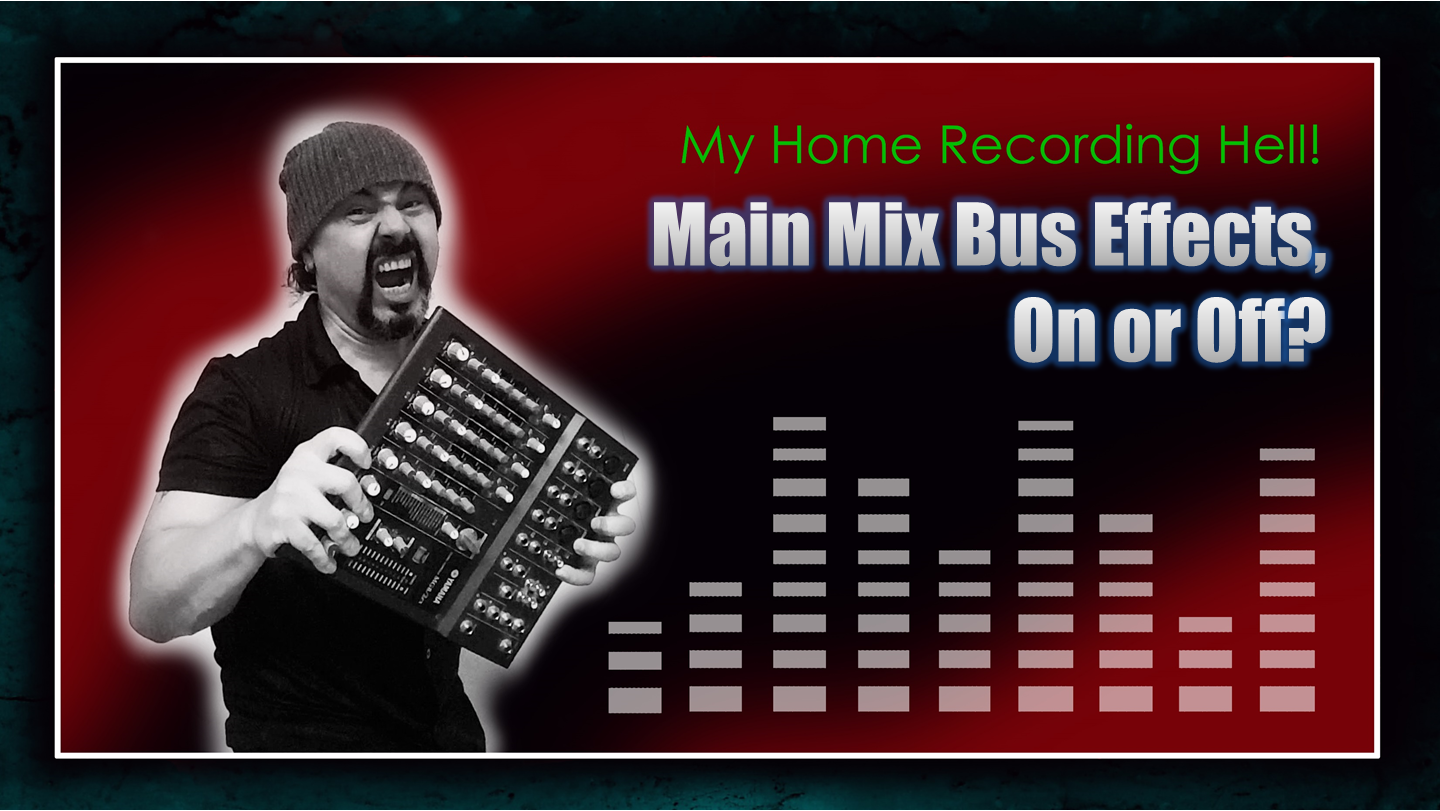
When you’re working on a project, once you get the initial balance right and you know that all your signals are clean, don’t exclude all the effects and wait till the end to bring them in, especially the ones on the Main Mix Bus. Because the effects, inevitably, will bring in new characteristics to the tracks. They will almost become new instruments that have their own unique timbres which means more harmonics and frequencies you have to consider, tame and balance.
For example, if you happen to add some sort of saturation plug in to the main bus track, or keep some overall mild compressor action going on, it will not affect all the tracks in the same way. Say, drums may end up being compressed more than the bass, or something like that, and this may mean that their relationship which was perfect when they were all dry has changed completely; a new ratio is required. You set them right, the bass and drums are perfect together, but now they over shadow the piano and so on…
That’s why, once I got the basics down, I keep the effects on at all times and try mixing that way. That’s my approach anyway. Because otherwise, after all the work has been done and I turn the effects on, I still have to go back and start all over. Maybe wiser ones know their way around it, but this is how I manage to roll.
Mix on, friends.
G
Brick by Brick, Step by Step
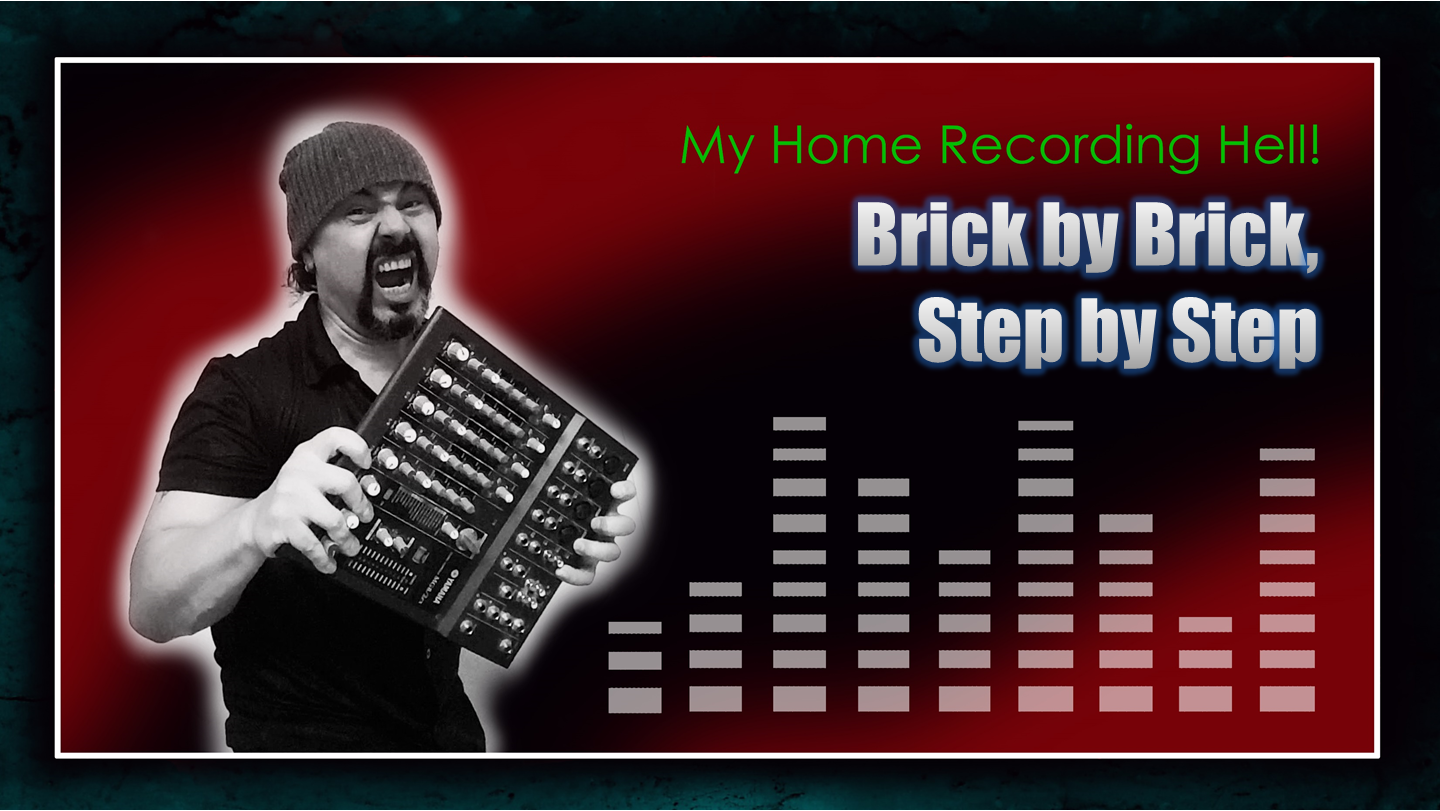
Although, I am a very organized person in general, especially when it comes to musical projects, a mistake that I still make is diving into too many ideas once in a while and trying to gather and combine them too quickly. Neither do I have the energy nor do I have the time to make them turn into the entity that I am imagining in my head. Of course, in the end, I get somewhere but it’s hell until that moment arrives. I get overwhelmed by the tons of half-finished bits and pieces that someone has to saw together now.
For example,
I’d start writing a bass pattern for the chorus, meanwhile I’d have an idea for the guitar solo. I’d start working on that which brings another drum idea to mind that would go well with certain parts of that particular melody. I’d make changes in vocal track that would mean that all the backing parts that had been recorded before the “star” arrived would have to be re-arranged and re-recorded. All this is before I even start recording or mixing, mind you.
Sometimes I try recording all the possible ideas that I can think of so that I can go back and choose whatever suits best to whatever part. It is not necessarily a wrong to do… for some maybe, especially if you have the time. But in my case the longer I dwell on a project the more frustrated I get. I like moving fast and finishing a project before I lose interest in it. Just like anyone, I enjoy working on fresh ideas that excite me and I am not short of them, either.
To cut the long story short, what I’ve happen to discover is, even though skipping a due planning and/or small boring details may seem like a short cut and a ticket to jump into more fun and creative steps, in the long run, and more often than not, it all blows up in your face and prolongs the process. Again, and again, you are forced to go back and do what you should’ve done in the beginning anyway.
Go step by step, brick by brick. Don’t jump into another part before the one you’re working on is ready. Some people like starting out with laying down the kick drum and bass, some people choose recording a guitar riff as a dynamics-guide track to drive the rest of the song. It all depends on your genre and your personal choices but I think it would be more productive if we decide what will happen in what order.
Mix on, friends.
G
Mixing with Earbuds?
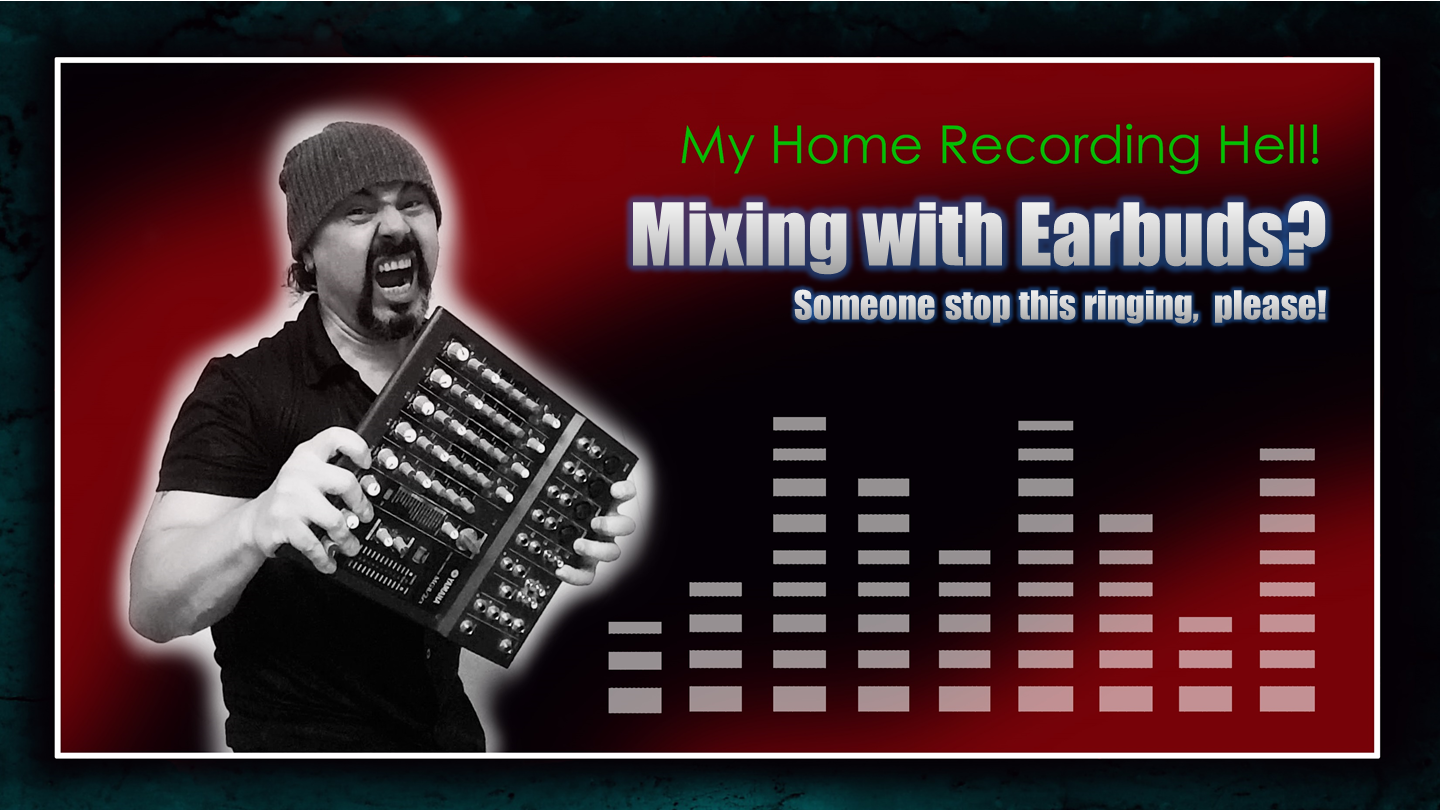
I know that it’s not such a healthy thing to do for my ears, but I happen to use earbuds a lot in my everyday life; when I’m listening to music or when I’m watching a program or a movie on my mobile phone, etc. I like the isolation aspect of it. A huge headphone set could provide a better result maybe but I don’t find it comfortable to walk around with a monstrosity on my head like an alien.
Needless to say, a headphone cannot provide what a quality speaker or a monitor may give you but more often than not, the convenience of it leads you in that direction. The same goes when you’re working on a mix. When you don’t have a professional studio and you are surrounded by neighbors who are ready to jump at your throat at the hint of a beat, regardless of its level. You don’t have any other choice but to use headphones. In all fairness, I understand your neighbors, too, because I AM one of them. I hate being forced to listen to someone else’s choice of noise, even when it is the breeziest, the nicest example of some classical music piece.
For years, I used regular headphones (Sennheiser, Sony, AKG) which were quite good for listening to anything as a LISTENER. But when I mixed my demos with them and then I tested them on different sound devices, the results were either terrible or not at all like what I had heard on MY recoding system. I had to go through waaay too many trials before I could get a tolerable final mix.
Not that all my problems are fixed now but what I’ve realized is that earbuds that go inside my ears are way more useful than usual headphones when it comes to monitoring my mainly rock/pop kind of mixes. I still have to do a lot of trial and error but the results are closer to what I hear at the source and more reliable than what I get from bigger headphones that leave some air between the signal and your ear that may be somewhat deceiving.
Of course, my ears get worn out way quicker and I’m sure, the high frequencies are doing no good for my hearing. But I think, when used carefully and without over-doing it, the earbuds are a good technical alternative for a home-recorder like me.
MIND YOU,
the qualities of earbuds and their frequency responses vary, they are limited in many cases. Not only that, they are designed to make anything sound nice and friendly; that’s not what we’re looking for when we’re mixing, we WANT to hear the ugly and the unpleasant so that we can fix it, right?
Disclaimer: I am not saying that one SHOULD use earbuds or headphones; on the contrary try NOT to use headphones when you’re mixing if possible. Nothing beats a good monitor in an appropriately arranged room. I just wanted mention what I happen to be doing with my tiny, tiny budget, that’s all.
Mix on, friends.
G
Backbone and a Star

For the sake of this particular subject, let’s assume that you’re a home recorder/mixer who usually produces his/her rock, pop songs at home. Although following rule can be applied to any genre, as far as I am concerned, pop/rock songs tend to have more of a solid frame, a box if you will, that we try not to get out of too much whereas a jazz recording might be more spontaneous and adventurous. A pop/rock song have the risk of being mundane and boring if not seasoned craftily. On the other hand, from a mixer’s stand point, it has the advantage of being safer and more predictable; once the basic factors are settled, that is.
What are those basic factors?
In most cases it’s the drum, bass and vocal tracks.
In the grand scheme of things, if you get the balance between those three, you don’t have to worry much about anything else.
Why?
Because drum and bass are the backbone of your mix. When they are solid, a listener would feel comfortable tapping his/her foot or headbanging to it, etc. Even if what you’ve put on top of them has some flaws, they’d be tolerable to a relatively higher extent.
Then we have the vocal. That’s what a listener pays attention to the most, and rightfully so, because vocal is the messenger, the communicator; it’s the main connection source to the heart of a listener.
I am not saying the that the rest of the instruments aren’t important but once you’ve got the drum, bass, vocal balance right and it’s got a groove, it will only leave room for the rest to settle in nicely. Now they won’t have to struggle and fight throughout the song. Their job is to be the color, the embellishment that will enhance the experience.
We assumed that the vocal track was the star here, however, it doesn’t have to be. Maybe you are a, say, saxophone player. Still the same rule applies. Get your drum and bass to sound solid, blend your sax track in, make them groove together smoothly then add your piano, guitar, etc.
Mix on, friends.
G
Demoitis, There ain’t No Cure for Love!
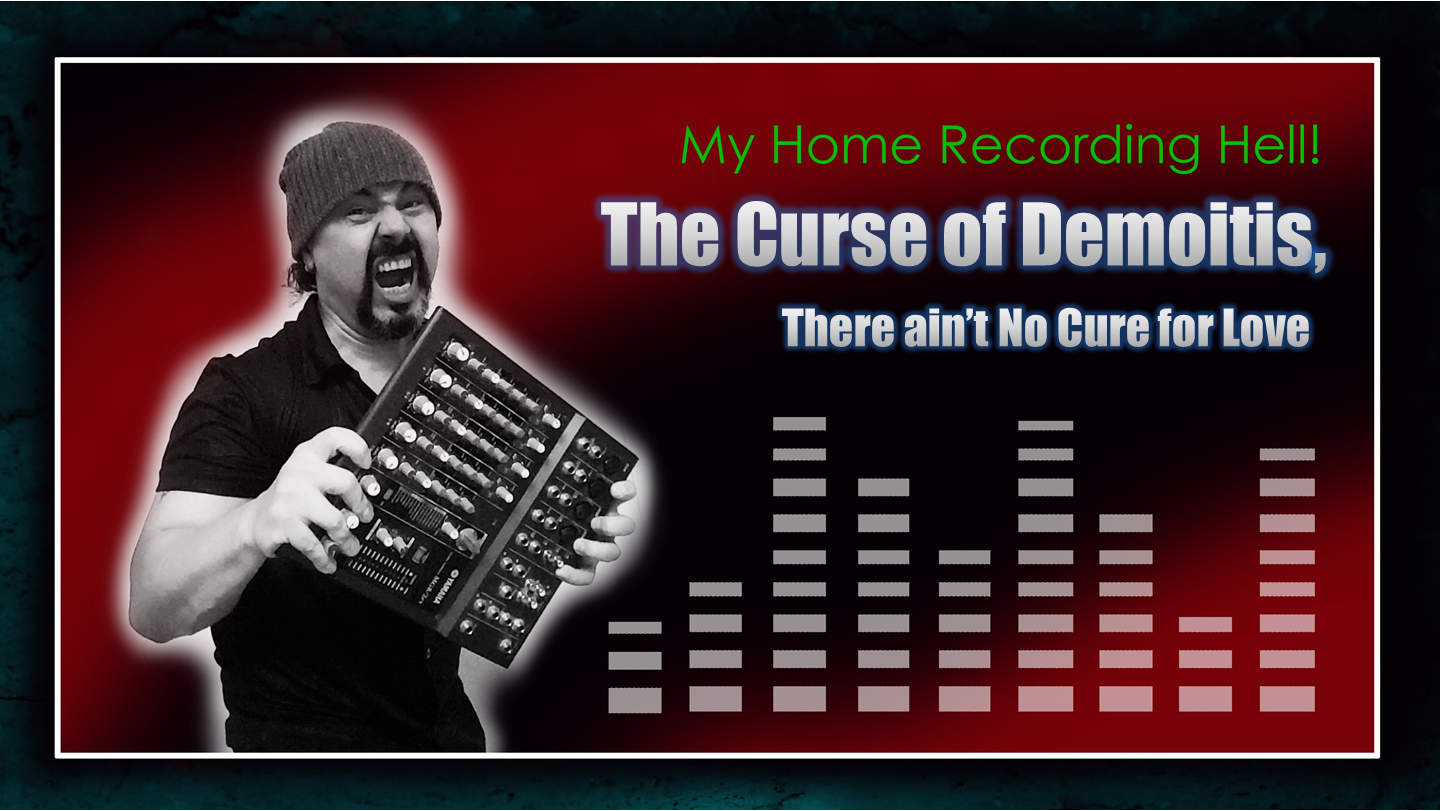
When I write a song, I literally WRITE it, down on a staff paper. But it takes a bit of time; what ends up happening is half the flow and the ideas are gone by the time I have, FINALLY, managed to put down a few lines. So, as a solution to that, I turn on a voice or better yet my video recorder (thank you, my dear phone) and I capture the moment first. I let everything in, however silly it may be. Then I go through the file and write down what’s usable out of that chunk on a paper. I organize it roughly. I practice it to bring myself to a point where I can perform it just good enough so that I can record a combination of the selected parts. Then I start listening to it to memorize it. In the past, I used to go back to my sheet music to do the same, but what that meant was that I needed my instrument with me and I needed to be at home or at a location where it was possible for me to perform the new song over and over again without disturbing anyone; not a very easy thing to achieve. Whereas now, I just have the rough recording in my phone, that’s it. I can listen to it whenever, wherever, no limits.
Next step is writing down the basic backings like drum, bass, harmonies and create a rough demo out of them without worrying much about the sound quality, bumps and holes in various places, etc.
Once I have a good idea on what works and what doesn’t, I start the” real” recording process then move on to the mixing.
Sounds like the plan, right? Go step by step as mentioned above and nothing will be a problem.
Not quite.
When you’re as obsessed with details as I am, not everything moves that smoothly, not even when it actually does.
Let me explain,
When I record a rough demo, there is a looseness to it. There are nice mistakes that occur unexpectedly, like squeaking of a guitar string, cracking of your voice, a short breath before a phrase, etc. They are technically” mistakes and flaws” … yet, they create unique qualities which are quite nice, they add a lot to the music. You take your time getting to know your song, you get used to hearing those little things while you listen to your demo over and over again and you end up falling in love with them. You may say” So what? Do them again when you’re re-recording”, right? The problem with that is that all those small things are spontaneous little occurrences that are difficult to re-create. Even when you DO do a perfect job, they sound artificial. Because that moment when the original flaw had happened is history now. Something is not quite the same, whatever you do, at least to the ears of the creator. Someone else might find the second version even more appealing but you and your ears will always know better and disagree.
This is something called DEMOITIS and many songwriters or mixers suffer from it. Living in the shadow of an earlier version of your work and feeling like nothing ever will live up to it and be good enough. This can be even more problematic for those who only do the songwriting part and have to let his/her baby grow up in the hands of studio craftsmen who don’t necessarily see the exact the picture that’s bloomed in the songwriter’s mind or, simply put, they just don’t think, that’s the best idea for that particular song, period. Tricky business.
So, what to do?
There basically two things you CAN do.
Let it go. Let past be past and learn to live with what you’ve got now.
Or… never record a demo again. Instead, start your real recording as a demo and do many loose takes, keep what works with all the nice flaws and later delete what doesn’t work. With all the digital technology of today it shouldn’t be very difficult to do.
However… of course, that second option may bring in some issues like RAM and CPU failings. Because you will be piling up all that audio junk into your program and, especially at earlier stages, it will probably be very demanding for your computer unless you have a separate one that is capable enough and that you only use it for your music making projects.
It always seems to be win some lose some with these things, dammit!
Anyway, good luck with all that.
Mix on, my friends.
G
Automation

In the past, before the digital audio workstations existed, at least for me, I used to use a 4- track cassette recorder to create demos. It may not be a pleasant experience in today's standards but in those days, it was a "Thrill Ride". You had to be very creative to get the most out of those machines. Recording had to be correct, performance had to be correct, you couldn't fix much in the mix.
Let’s say, the act was captured well and the balance between your endless(!) choice of tracks could be perfect; that didn’t mean you weren't done yet. You had to do the final mix and give the master touch in other words transfer your song into an ordinary cassette, in actual time, moving the faders up and down. It was another performance all together and it didn't tolerate any lack of concentration. Well, in the end, you did what you could without ever getting quite what you had imagined when you started.
How would I describe automation?
Planning and programming when the faders will move and where in the song.
Working manually not only on master mix bus but on individual tracks, one by one beforehand.
Then in the end letting your DAW apply all your settings.
Something like that.
Why automation?
Because it is your personal touch where you can go into absolute details and accentuate the best parts of your performances. Sure, you could set the main faders in one stationary position, leaving the tracks as they are and you could trust your tools like EQ and Compressor to handle the rest, but unless you know a way to guide them throughout the song and tell them exactly what to do second by second, they will act in a standard way. They may give you a pleasant enough result but it's very likely that that wouldn't necessarily the one that you had in mind.
Cons?
Well… if you mess with the original tracks more than you should, especially with the audio files, you might end up making the whole thing sound weird and artificial. So, one has to be subtle with the faders without jumping up and down too much and too fast, unless a particular part really, REALLY calls for it, of course.
At the end of the day, compared to the old ways that I mentioned above, automation is pretty easy to do these days. It just takes a bit of time, that's all. Give it to it, dammit!
Mix on, my friends.
G
Dot Connecting Brain

Has the following ever happened to you?
You're outdoors somewhere. In the distance, you hear a vague melody. It's one of your favorite songs on the radio. You start humming or nodding your head and friends around you look at you like you’re crazy. They don't seem to have a clue about what's going on. As it turns out, you're the only one who can hear or recognize the song. When they concentrate, they can hear the sound alright but they can't quite make out what song it is.
What's happening there is that your ear manages to catch some clues, little nuances from the song. You may not actually be hearing the whole song properly, just like your friends can't, but for some reason, probably because you're more familiar with it than they are, your brain connects the dots and make you feel like you're hearing the whole thing.
Another example would be this,
When I’m listening to some tunes on my phone in my kitchen during breakfast, acoustics in the room are terrible, the phone is on the counter, the signal is mono and affected by every possible object around. Add to that, the noise that the gluten-free crackers I am eating make in my head... But none of those seems to matter, somehow. I’m just enjoying the song. Because what I THINK I am hearing and what my ears are actually receiving are not the same thing, not by a long shot, UNLESS… I force myself to get out of that box and concentrate, that is. It's like imagining what your language would sound like to foreigners.
In my humble opinion, this should be any home recorder's concern, especially if you're the musician/songwriter. Because in that case, it's very likely that you've practiced your tune a hundred billion times, not to mention listening to it during your takes and mixing process. The chances are that your fabulous, overzealous brain cannot wait to jump in and connect those merry dots for you.
So, what to do?
I’d say,
Take a lot of breaks during mixing. Don't wear your ears out and desensitize them to what's actually there.
Concentrate. Pretend that you're not "you" but a stranger who happens to be listening your song. Try hearing things like, "Is my guitar too loud or is the vocal too quiet?", "Is everything that should be in the focus at a given moment really clear enough?", "Is the reverb too heavy on that specific track, is it making everything sound way too mellow?", etc.
I know it is a bit hard to explain with just words and it is an issue that may differ depending on a person but it is something to consider nevertheless.
Mix on, friends
G